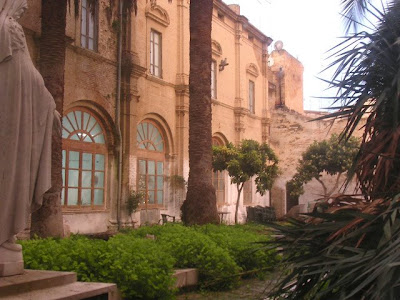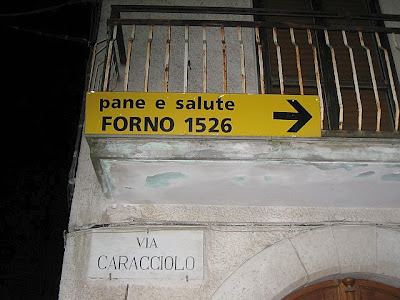The nonstop Air France flight from Los Angeles to Paris – amazingly, one of three daily connections – bounced me around far more than I find enjoyable at 36,000 feet. Over the Rockies, over Hudson Bay, and again between Greenland and Iceland, the fasten-you-seat-belt sign remained illuminated for three eventful hours. That discounts the turbulence before the pilot finally called everyone back to their seat, a respectable delay on Air France.
I cinched it as tight as I could to prevent me from sliding under the belt. After three attempts to watch “Ratatouille,” I gave back trying to focus on the seatback screen. The tail winds push us onto the Charles de Gaulle runway an hour ahead of schedule. The pilot must have wished to keep our good time a secret from airport officials because no gate was available to park the aircraft. We taxied to a lonesome corner of the airfield. The terminals were no longer visible. The secrecy was well kept because it took 45 minutes before stairs and buses were brought in to shuttle the captive passengers to the terminal.
The time gain slowly evaporated. After immigration, we dashed to the departure gate for the flight to Rome. Hungry for a breakfast that was skipped on account of the turbulence, I withdrew a few euros from my bank’s ATM hastily. Too much so, clearly, because I used the wrong account. But somehow, my bank disburses the funds. I started to visualize the penalties stacking up.
The Alitalia flight would not board for another hour, delayed by the same strong winds. With time on my hands, I grabbed a €3.80 espresso. The early December 2007 exchange rate calculates my coffee demitasse at $5.87. Ouch!
The announcement woke up my seatmate who had spent the better part of the last hour dozing off. “Siamo già arrivati?” she asked. “No,” my poor woman, I replied. “Siamo ancora a Parigi.”
We circled over Rome and I spotted St. Peter’s and the Coliseum. A gust of wind slapped me back inside the cabin as I stepped onto the stairs. Once more, the plane parked in the far recesses of the airfield and we had to ride a bus to the main terminal .
No need to cry over our next connecting flight to Bari. It left a long time ago. We could not make it to the city to catch the train to Foggia and thus placated resolved to wait five hours for the next one. It was 1:30 a.m. when I collapsed onto my hotel bed, 31 hours after I left Santa Barbara. With the nine-hour time difference, two full days almost vanished.
 The trade delegation embarked on tours of olive oil and vegetable preserve producers. Sumptuous meals punctuated the itinerary. Among all the goodies, the mozzarella caught my attention because it tasted unlike anything I have purchased. In the summer time, I prepare caprese salads at least twice a week and use fresh mozzarella. Fresh mozzarella, like fresh parmesan cheese, bears no relation to the version lathered on top of pizzas in the United States. The taste and texture are so different that I question whether it is the same product.
The trade delegation embarked on tours of olive oil and vegetable preserve producers. Sumptuous meals punctuated the itinerary. Among all the goodies, the mozzarella caught my attention because it tasted unlike anything I have purchased. In the summer time, I prepare caprese salads at least twice a week and use fresh mozzarella. Fresh mozzarella, like fresh parmesan cheese, bears no relation to the version lathered on top of pizzas in the United States. The taste and texture are so different that I question whether it is the same product.
But this mozzarella melted in the mouth. It felt impossibly supple on the tongue, far mellower than the mozzarella I purchase at Trader Joe’s. Top grade mozzarella is made from the milk of the water buffalo, an animal not native of Italy or anywhere nearby. No one could determine when the south Asian beast first appeared on these shores. But the consensus clearly pointed to the Italian regions of Campania and Lazio as producing a superior mozzarella.
A ball of mozzarella di bufala is so rich that it feels sacrilegious to have it share a plate with basil or tomatoes. Eat it plain, without olive oil. Delicious.

 The Apulia region borders the Adriatic, from the spur of the booth to its heel. It is an agricultural land that nevertheless reveals fascinating communities with a long history.
The Apulia region borders the Adriatic, from the spur of the booth to its heel. It is an agricultural land that nevertheless reveals fascinating communities with a long history.
With Allison and an entourage of local personalities, we toured the quaint cobblestoned streets of San Severo, Cerignola, Orsara di Puglia and Lucera. Our good humor found an echo in all we encountered. We cracked up with our translators when details of Longoboard prehistory overwhelmed us. We posed with the owner of a bar and our picture on the front page of the Gazzetta di Capitanata. I forgave the journalist Franceso for the several misspellings (in the same story) of my name. Mayors confirmed the distinction between sindaco and sindico, although one confessed he had been both. We stuffed our mouth with outsized cerignola olives. Luigi, jovial and kind agente della polizia municipale, toasted us with good cheer. I drank to chase the cerignolas and to forget the questions about the wisdom of our political leaders.








Orsara di Puglia



Lucera



 Paradoxically, we spent no time in Foggia where our hotel, the Cicollela, was located. On the first day, I engaged in a bizarre conversation with a post office employee who would only sell me on stamp whereas I wanted nine. I had rehearsed my sentence to appear somewhat knowledgeable about what I needed, but I could not extract from her why I could not get all my stamps. I can pay, I assured her, but she would only say that I needed to come back the next day. I asked if we could continue this entertaining exchange in English or French, but she said my Italian was fine.
Paradoxically, we spent no time in Foggia where our hotel, the Cicollela, was located. On the first day, I engaged in a bizarre conversation with a post office employee who would only sell me on stamp whereas I wanted nine. I had rehearsed my sentence to appear somewhat knowledgeable about what I needed, but I could not extract from her why I could not get all my stamps. I can pay, I assured her, but she would only say that I needed to come back the next day. I asked if we could continue this entertaining exchange in English or French, but she said my Italian was fine.
I reported this to my translator who said that post offices in Italy do not sell stamps in the afternoon. You have to go to a tobacco shop for that, but if you want music cd’s or stuffed animals, the post office is the place!
I found the depths of Apulia far more fascinating than the region’s economic output would predict. I do not advise visitors to the Midwest or the farm regions of any state to expect a similar outcome. Apulia (I wish the English name was the same as in Italian – what’s with the extra “a” and the missing “g”?) takes pride in its terroir, its foods and wines. The architecture and art surprise. These attributes would stand out in my country, but here they must compete for attention with the likes of Florence, Venice, Rome…
 They said it couldn’t be done. They said even to attempt it was crazy.
They said it couldn’t be done. They said even to attempt it was crazy.
My day was already six hours old when I pulled into Rome’s Termini at 9 a.m, fueled by either foolishness or sleeplessness. This was not going to be a leisure trek though the città eternale’s many charms, but a crash course in resourcefulness.
I bypassed a much desired tassa di caffè and jammed myself into a rush-hour subway car headed toward the Colosseo. Half-awake Romans crowded me on all sides, but with only two stops, there was no time for more formal introductions.
 The brisk morning air jolted my senses. I waved at a couple of gladiators outfitted for the occasion and joined a dozen eager tourists on a tour of this impressive monument, which I had glimpsed from the sky a few days earlier when my flight approached Fiumicino in turbulent weather. It was a return visit, a mere 29 years after the initial one. Time flies. I walked around the grounds, climbed the stairs to the cheap seats and peered into the exposed underbelly. In the immediate vicinity stand the Arco di Constantino that marks the beginning of the Via Sacra, the Foro Romano, and churches I cannot identify.
The brisk morning air jolted my senses. I waved at a couple of gladiators outfitted for the occasion and joined a dozen eager tourists on a tour of this impressive monument, which I had glimpsed from the sky a few days earlier when my flight approached Fiumicino in turbulent weather. It was a return visit, a mere 29 years after the initial one. Time flies. I walked around the grounds, climbed the stairs to the cheap seats and peered into the exposed underbelly. In the immediate vicinity stand the Arco di Constantino that marks the beginning of the Via Sacra, the Foro Romano, and churches I cannot identify. 

 The short couple of hours I surrendered to Rome infused me with an intimate complicity. In the chaos and disorder I see a reluctance to conform to the more structured rhythms of efficiency. The pleasures of the unexpected have difficulty surfacing within the constraints of order. The abdication of serenity outweighs any gain in productivity.
The short couple of hours I surrendered to Rome infused me with an intimate complicity. In the chaos and disorder I see a reluctance to conform to the more structured rhythms of efficiency. The pleasures of the unexpected have difficulty surfacing within the constraints of order. The abdication of serenity outweighs any gain in productivity.
A sensuality envelops Rome, a point of overlap of the temporal existence in the eternal city. A daily theater plays out on a passionate stage. Romans ignore the splendid architecture and the timelessness of their surroundings. They carry on, dignified, aware of their place in the world.
I walk these streets as if I had walked them since birth. I am wanted in Paris. Time for the final indulgence of an excellent cappuccino (€1.15 – take that, Charles de Gaulle!) at Termini and I hop on the train back to Fiumicino. I am carrying Rome with me.


No comments:
Post a Comment